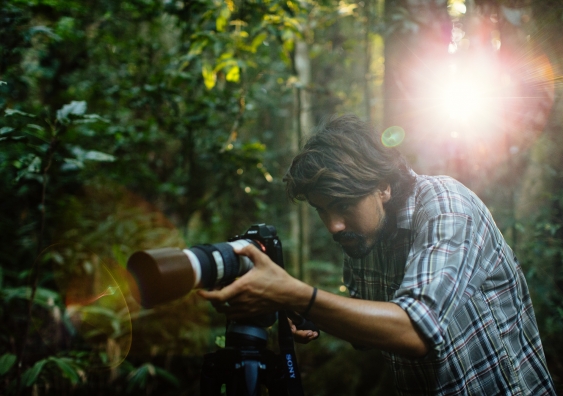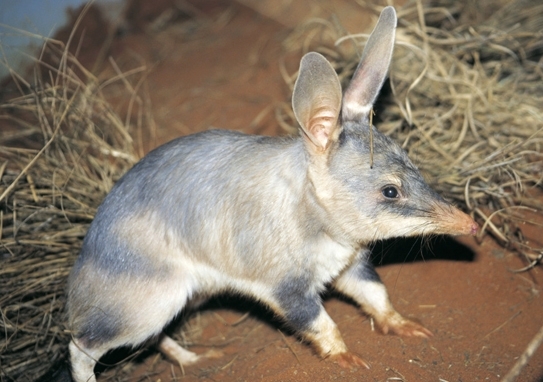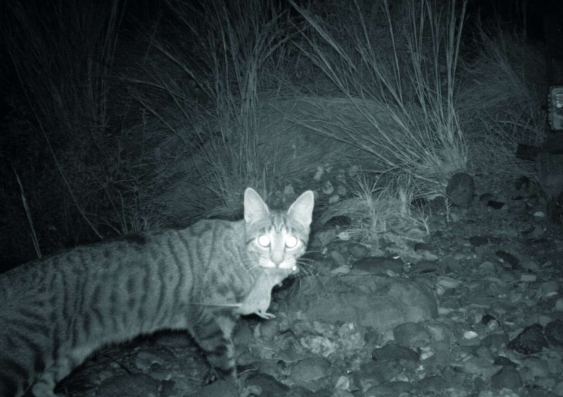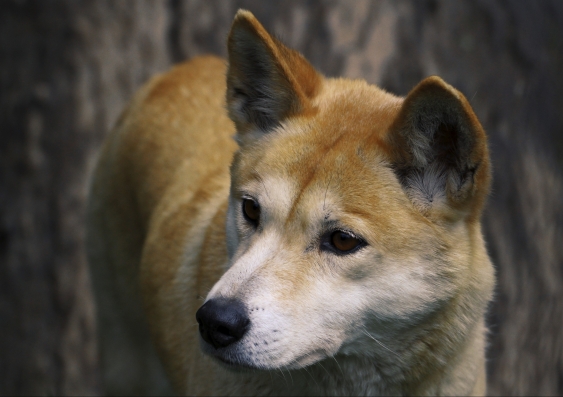Dog eat cat: the push to re-wild Australia
Scientist and filmmaker Daniel Hunter believes “re-wilding” is the best way to battle the invasive predators driving many species to extinction.
Scientist and filmmaker Daniel Hunter believes “re-wilding” is the best way to battle the invasive predators driving many species to extinction.

At sunset the killer comes out to feed. She leaves the safety of her hollow log and pads through the darkening forest. It is late summer and she is pregnant.
Then she sees it: a small marsupial foraging among the leaf litter. She crouches, her tail a silent metronome. Then in a blur of stripes and claws her muscular body hits its target: a southern brown bandicoot.
This brutal encounter between feral cat and native animal is repeated nightly across Australia. Although estimates vary, it’s generally agreed there are millions of feral cats in Australia, and each night they kill at least as many native animals. The carnage wrought by these introduced predators has contributed to the extinction of at least 20 small Australian mammal species.
The roll call of termination is harrowing. Gone forever are the desert bandicoot, the lesser bilby, the desert bettong, the Nullarbor dwarf bettong, the broad-faced potoroo, the Darling Downs hopping-mouse and Gould’s mouse. The list goes on.

The lesser bilby.
And it’s not just feral cats. There are some seven million red foxes in Australia, which have pushed at least six Australian mammal species to extinction and they're threatening to drive another 10 over the edge, including the endangered loggerhead turtle, whose eggs and young the fox feasts on.
If you add in the effects of climate change and the destruction of habitat, many of Australia’s iconic animals are in a desperate fight for survival.
So what can be done? Traditionally we have shot and baited invasive species. More recently we have created conservation zones. But a growing tide of scientific opinion argues there’s a bolder way to halt the carnage – re-wilding the Australian landscape with native-born apex predators. Use the dingo and the Tasmanian devil against these interlopers; and give cats and foxes a taste of their own medicine.

The carnage wrought by introduced predators has contributed to the extinction of at least 20 small Australian mammal species.
One such advocate is conservation biologist Daniel Hunter, a 29-year-old doctorate student at UNSW whose passions are surfing, filmmaking and conserving Australia’s endangered mammals.
After studying science at Melbourne University, Hunter got the filmmaking bug and made his way to the University of Otago in New Zealand, where he spent two years honing his skills as part of a science communication degree.
When he started his doctorate at the Centre for Ecosystem Science at UNSW about the effect of dingoes on other native fauna and flora, Hunter says the idea of a film leapt out.
“You can write 1000 scientific papers,” Hunter explains, “but are you really going to communicate to the public?”
As he carried out field research in the Greater Blue Mountains World Heritage Area, Hunter lugged his camera along. The result is his documentary, Battle in the Bush.
For his doctorate, overseen by UNSW Associate Professor Mike Letnic, Hunter is studying the effects of “trophic cascade”. In a balanced ecosystem, a small number of apex predators, such as dingoes, help regulate the impact of smaller prey animals. Hunter’s hypothesis is dingoes in the Blue Mountains suppress feral predators either by killing them or by creating a “landscape of fear” in which the “feral cat or fox is always looking over its shoulder”.

Canis dingo was largely isolated from other canids (dogs, wolves, foxes, jackals) after it was introduced to the Australian continent around 3,000 years ago. But this changed when European settlers arrived with domestic dogs.
So let’s encourage dingoes, he argues. More controversially, however, he also wants to reintroduce Tasmanian devils to the mainland. Farmers don’t like dingoes because they eat livestock. The devils will suppress the foxes and cats; the dingoes – living deeper in the bush – will remain there because of poison baiting regimes.
This sort of re-wilding has been tried in other parts of the world – most famously in Yellowstone National Park, where wolves have been reintroduced to control the park’s deer population. And Tasmanian devils were once part of the mainland’s ecosystem: some scientists argue they lived here as recently as 500 years ago.
Hunter thinks this approach must eventually hold sway.
“I love all animals,” says Hunter. “But cats and the Australian bush – they just don’t work together, and that’s the bottom line.”
Battle in the Bush is now being considered by several film festivals. A longer version of this story first appeared in Inside Story .